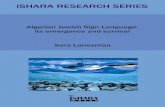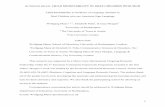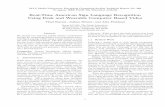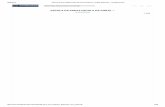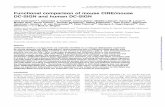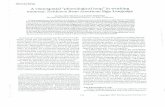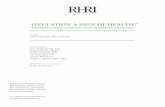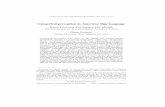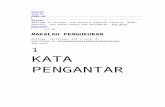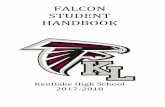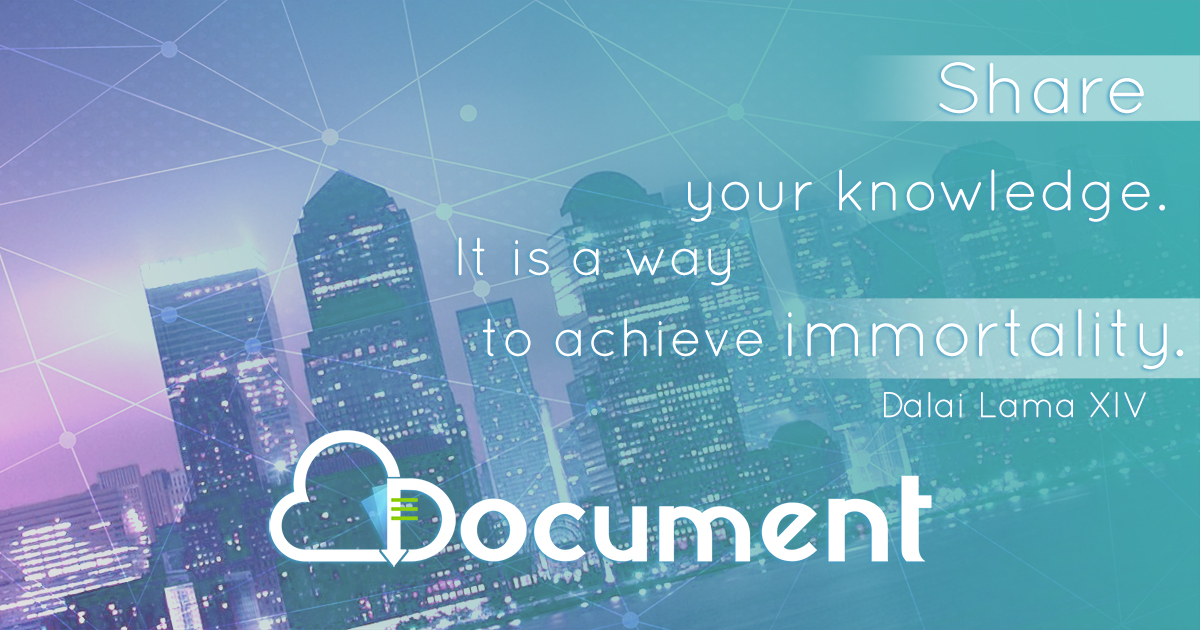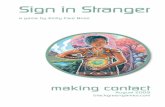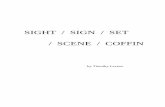Deep Learning Application On American Sign Language ...
-
Upload
khangminh22 -
Category
Documents
-
view
3 -
download
0
Transcript of Deep Learning Application On American Sign Language ...
Sheridan College Sheridan College
SOURCE: Sheridan Institutional Repository SOURCE: Sheridan Institutional Repository
Student Theses Honours Bachelor of Computer Science (Mobile Computing)
Winter 11-8-2020
Deep Learning Application On American Sign Language Database Deep Learning Application On American Sign Language Database
For Video-Based Gesture Recognition For Video-Based Gesture Recognition
Muhammad Murtaza Saleem Sheridan College, [email protected]
Follow this and additional works at: https://source.sheridancollege.ca/fast_sw_mobile_computing_theses
Recommended Citation Recommended Citation Saleem, Muhammad Murtaza, "Deep Learning Application On American Sign Language Database For Video-Based Gesture Recognition" (2020). Student Theses. 2. https://source.sheridancollege.ca/fast_sw_mobile_computing_theses/2
This Thesis Open Access is brought to you for free and open access by the Honours Bachelor of Computer Science (Mobile Computing) at SOURCE: Sheridan Institutional Repository. It has been accepted for inclusion in Student Theses by an authorized administrator of SOURCE: Sheridan Institutional Repository. For more information, please contact [email protected].
Deep Learning Application On American Sign
Language Database For Video-Based Gesture
Recognition
A Thesis
presented to
School of Applied Computing, Faculty of Applied Science andTechnology
of
Sheridan College, Institute of Technology and Advanced Learning
by
Muhammad Saleem
in partial fulfilment of the requirements
for the degree of
Honours Bachelor of Computer Science (Mobile Computing)
June 2020
© Muhammad Saleem, 2020. All rights reserved.
Deep Learning Application On American Sign Language
Database For Video-Based Gesture Recognition
by
Muhammad Saleem
Submitted to the School of Applied Computing, Faculty of Applied Science andTechnology
on December 13, 2020, in partial fulfillment of therequirements for the degree of
Honours Bachelor of Computer Science (Mobile Computing)
Abstract
ASL speaking individuals always bring a companion as a translator [1]. This cre-ates barriers for those who wish to take part in activities alone. Online translatorsexist, however they are limited to the individual characters instead of the gestureswhich group characters in a meaningful way, and connectivity is not always accessi-ble. Thus, this research tackles the limitations of existing technologies and presentsa model, implemented in MATLAB 2020b, to be used for predicting and classifyingAmerican sign language gestures/characters. The proposed method looks further intocurrent neural networks and how they can be utilized against our transformed WorldLargest – American Sign Language data set. Resourcing state of the art detectionand segmentation algorithms, this paper analyzes the efficiency of pre-trained net-works against these various algorithms. Testing current machine learning strategieslike Transfer Learning and their impact on training a model for recognition. Ourresearch goals are: 1. Manufacturing and augmenting our data set. 2. Apply transferlearning on our data sets to create various models. 3. Compare the various ac-curacy’s of each model. And finally present a novel pattern for gesture recognition.
Keywords: American Sign Language, Deep Learning, Convolutional Neural Net-work, Models, ASL Data set, Computer Vision, Transfer Learning, WL-ASL. . . .
Thesis Supervisor: Dr. Abdul MustafaTitle: Professor, School of Applied Computing
3
Acknowledgments
This is dedicated to Richard Comeau. Many thanks to my Advisor: Dr. Abdul
Mustafa for assisting me in this project especially during such a difficult time. In-
cluding Dr Rachel Jiang who assisted me in the first half
4
Contents
1 Introduction 9
1.1 Motivation . . . . . . . . . . . . . . . . . . . . . . . . . . . . . . . . . 9
1.2 Approach . . . . . . . . . . . . . . . . . . . . . . . . . . . . . . . . . 10
1.2.1 Transfer Learning and Neural Networks . . . . . . . . . . . . . 12
2 Literature Review 15
2.1 ASL Detection Systems . . . . . . . . . . . . . . . . . . . . . . . . . . 16
2.2 Segmentation & Extraction Algorithms . . . . . . . . . . . . . . . . . 17
2.3 Object Detection & Recognition . . . . . . . . . . . . . . . . . . . . . 18
2.4 Classification Models . . . . . . . . . . . . . . . . . . . . . . . . . . . 19
2.5 Deep Neural Networks . . . . . . . . . . . . . . . . . . . . . . . . . . 20
3 Methodology 23
3.1 Initial Phase . . . . . . . . . . . . . . . . . . . . . . . . . . . . . . . . 23
3.2 Process . . . . . . . . . . . . . . . . . . . . . . . . . . . . . . . . . . . 24
3.3 Data Set . . . . . . . . . . . . . . . . . . . . . . . . . . . . . . . . . . 26
3.3.1 WLASL . . . . . . . . . . . . . . . . . . . . . . . . . . . . . . 26
3.4 Data Processing . . . . . . . . . . . . . . . . . . . . . . . . . . . . . . 27
3.5 Convolutional Neural Networks . . . . . . . . . . . . . . . . . . . . . 29
3.6 Deep Learning . . . . . . . . . . . . . . . . . . . . . . . . . . . . . . . 30
4 Findings 33
4.0.1 Alexnet . . . . . . . . . . . . . . . . . . . . . . . . . . . . . . 35
5
4.0.2 Google-Net . . . . . . . . . . . . . . . . . . . . . . . . . . . . 36
4.0.3 Caffe-Net . . . . . . . . . . . . . . . . . . . . . . . . . . . . . 37
5 Conclusion 41
5.1 Summary . . . . . . . . . . . . . . . . . . . . . . . . . . . . . . . . . 41
5.1.1 Advantages and disadvantages of our pre-trained networks. . . 42
5.2 Future Work . . . . . . . . . . . . . . . . . . . . . . . . . . . . . . . . 43
Bibliography 45
6
List of Figures
1-1 Provides an overview of the program workflow. Where each bubble is
it’s in own class, and the arrows represent the flow of data between
classes until it comes back to the Actor, which represents either the
end-user or the mobile device. . . . . . . . . . . . . . . . . . . . . . . 11
1-2 Visual to transfer learning, Building on top of pre-built models [1] . . 12
1-3 ”Under fitting, Over fitting in machine learning and how to deal with it” 13
2-1 Where each package represents the individual files and functions asso-
ciated with that class. . . . . . . . . . . . . . . . . . . . . . . . . . . 16
2-2 Color Marker based hand Gesture Recognition [2] . . . . . . . . . . . 17
2-3 ConvNet Sequence to classify handwritten digits [3] . . . . . . . . . . 22
3-1 Conversion of a one-dimensional array of labels into a two-dimensional
array. . . . . . . . . . . . . . . . . . . . . . . . . . . . . . . . . . . . . 24
3-2 Screenshot of the WLASL v03 json which holds information and url to
the original data set . . . . . . . . . . . . . . . . . . . . . . . . . . . 27
3-3 MATLAB work space showing the augmented images in their respec-
tive folders with an example of a static image from the WLASL data
set. . . . . . . . . . . . . . . . . . . . . . . . . . . . . . . . . . . . . . 28
3-4 MATLAB Processing on static image of sign ‘a’. Includes skin detec-
tion phase, using color tracking and finally hand detection. . . . . . . 28
3-5 GoogleNet Architecture: last 4 layers using “Deep Network Designer”
by MATLAB. Back box are the layers altered for transfer learning. . 31
7
4-1 Sequence length of all the videos with our data set. . . . . . . . . . . 34
4-2 ASL signs “read” top row and “dance” bottom row. notice how they
differ in orientation of the hands [4] . . . . . . . . . . . . . . . . . . . 34
4-3 MATLAB Cloud Computing with Nvidia GPU using MATLAB Com-
mand Terminal . . . . . . . . . . . . . . . . . . . . . . . . . . . . . . 35
4-4 Training on single CPU using MATLAB software for visualization . . 35
4-5 Matlab Terminal computation for accuracy = mean(PredY == Vali-
dationY). accuracy = 0.8061 . . . . . . . . . . . . . . . . . . . . . . . 36
4-6 Confusion matrix of our test set predicted by our googlenet model.
*Note: Confusion Matrix is reduced to fit page, size: 200* . . . . . . 37
4-7 preview of binary image ’Archery’ Result of ’augmentData.m’. . . . . 38
4-8 preview of binary image ’Aware’. Result of ’augmentData.m’. . . . . 38
4-9 Testing Caffe-Net Model on full binary image data store . . . . . . . 38
4-10 Testing our caffe net model on a reduced binary image datastore . . . 39
5-1 Fig 5.1 Testing on live recorded 2 sec video. Signing ’skate’ on right
with classified label left . . . . . . . . . . . . . . . . . . . . . . . . . . 43
8
Chapter 1
Introduction
1.1 Motivation
Sign language is a form of visual communication which involves a complex combina-
tion of hand movements. Certain placements of fingers can represent individual char-
acters, while a complete motion of characters and phrases translate to a full sentence
or gesture. According to World Health Organization, the number of hearing-impaired
individuals has reached over 400 million [5]. While it continues to rise the fact is that
signers, impaired individuals, will always bring a companion to translate for them.
This is due to the lack of accessibility in closed and social areas. In the modern world,
2 to 3 out of every 1,000 children in the United States are born with a detectable level
of hearing loss in one or both ears [6]. With many innovations in technologies, there
are plenty of mitigation to hearing loss including cochlear implants. However, these
are meant for the modern world where healthcare is essential. Countries like Pakistan
unfortunately do not provide the same luxury to children affected by hearing loss,
whether it be through pollution or trauma [7]. Thus, many children are taught at a
young age to sign in native ’Urdu’ and ’English’ [7]. Retail-environments and walk-in
businesses struggle with the barriers associated to speech too, thus losing valuable
connections with hearing-impaired individuals. Alfonso Castillo reported that signed
language interpreters are lacking [8]. Not only retail, but debates, conferences along
with legal proceedings provide limited accessibility for the hearing-impaired. Many
9
current solutions have been built on glove-based techniques. These computers read
the embedded sensor signals in the glove[9], but it is highly dependent on a prod-
uct and cost which limits impaired and non-impaired individuals. Cameras are what
everyone has, luckily most devices have camera’s and are also programmed for ac-
cessibility [10]. With that in mind, there should be a proposed solution that can
be efficient in an environment of point-point communication. This would provide a
much higher quality of living for folks that regularly communicate using ASL. With
advancements in technologies, human computer interaction, HCI, has greatly im-
proved. Automated systems and computer generated task now handle most analysis
and predictions, thus giving the rise to the era of Machine Learning [11]. With an
endless level of research in the field of machine learning. The motivation behind this
study was to create our own machine designed to learn human features gestures for
signed interpretations. Establishing a novel model that can be used for predicting
and classifying ASL without the need of a physical translator.
1.2 Approach
Computers and machines have the ability of learning based of images, signals, tabular
data, etc. This method of learning is also known as machine learning[9]. We can train
our machine to learn/re-learn the nuances of signers. Existing applications that utilize
computer vision include but are not limited to:
1. License Plate Detection,
2. Face and Emotion Detection,
3. Stop Sign Detection,
4. Plant Detection
Most of these applications are also created in a similar manner, such that the machine
is fed an array of labeled images or raw data. These images are then trained by
our machine using a high level abstraction algorithm that seeks to find relationships
10
amongst features [11]. Once completed our machine will be able to apply an algorithm
best suited to pattern recognition. These patterns and algorithms are crucial for our
machine to make informed decisions about unsupervised data. Where unsupervised
data would be unlabeled data not fed to our machine for training. Application that are
built for ASL characters have proved fruitful in recognizing static images. Alphabets,
and Numbers can be predicted with 80% accuracy [12]. This paper will investigate
the applications of machine learning on a much larger data set. In order to develop
a unique pattern for gesture recognition. Our workflow can be described using the
following use-case diagram:
Figure 1-1: Provides an overview of the program workflow. Where each bubble is it’sin own class, and the arrows represent the flow of data between classes until it comesback to the Actor, which represents either the end-user or the mobile device.
a large and publicly available dataset is needed. WL-ASL also known as World’s
Largest – American Sign Language data set released Jun 2020 [4], is studied in this
research. Using MATLAB tools for Deep Learning and Image Processing, [10], MAT-
LAB tools provide a solution to retraining available networks, and this subset of deep
learning is known as Transfer Learning [13]. Deep Learning, as a branch of machine
learning, uses a series of high-level abstraction against a network of filters. The net-
work can thus translate processed data to output an accuracy to a number of classes.
The network not being limited to vision/audio or un-ordered list. Developments in
deep-learning and computer vision have already provided valuable products in ve-
11
hicle detection, face recognition, and audio manipulation. The goal is to provide a
novel solution to pattern recognition in videos or images. The best way to describe a
pattern is to develop an arithmetic algorithm. These arithmetic models get
1.2.1 Transfer Learning and Neural Networks
Figure 1-2: Visual to transfer learning, Building on top of pre-built models [1]
Transfer learning can be described as starting on a mountain, similar to Fig 1.2
where most of the work that will be done relies on the back of giants in the data
science field. Transfer Learning is a subset of Deep Learning. It provides a new
method of enhancing neural networks. The process of transfer learning involves an
existing network and fine-tuning that network by making adjustments to training
parameters [1]. This adjustment can improve feature representation so that new task
can be supported by existing neural networks. In this research, the transfer Learning
method is applied to enhance our network by retraining it to a new augmented data
set. Our network can have a wide array of layers, however, the precision of our data
set and the variability of our data heavily influence our machines.
12
Although being cautious of not over fitting the network with too many features
and too little variation [1]. Our goal is to work on top of current neural networks
that have been trained on a million images. Creating a process similar to
Current applications apply transfer learning on networks to detect Regions of
Interest or further enhance Object Detectors like YOLO for real-time detections [14],
this can have a significant effect in our segmentation phase. Improving real-time
detection and classification is the goal of this research thus our Neural Network will
be fine-tuned by using our training enhancers and custom training data. By adjusting
the network, we find approaches to further mitigate any issues that can occur during
neural network training. One of the concerns that this research will look out for
is under fitting and over fitting during our training. With such an extensive list of
features there is a possibility of under fitting our neural networks. The best way to
spot these errors to understand how the data plots. Fig 1.3 provides a visual to what
over fitting and under fitting looks like versus a fit/Robust model.
Figure 1-3: ”Under fitting, Over fitting in machine learning and how to deal with it”[11]
Neural Networks have a huge role to play in our classification algorithm. Many
neural networks currently proposed in Sign Language recognition have been trained on
static alphabets, but not gestures. One of the most novel sign language recognition
algorithms was introduced by SignFi, [15], a Convolutional Neural Network, that
could establish 276 sign gestures. Although novel for its work, their model tested with
60% accuracy [15]. This research will find a way to improve on the SignFi system with
13
the use of Transfer Learning. To conclude, this thesis presents a model tested against
the processes of Deep Learning to prove the reliability of transfer learning on a set of
large features. The research that lead to this process is discussed in our Literature
Review in Section II. Our process is illustrated in Section III, Methodology. Findings
are described in Section VI, followed by the conclusion of our work.
14
Chapter 2
Literature Review
Machine learning, computer vision and deep learning are all closely related princi-
ples, heavily influenced by statistics and expanding the field of data science which all
conveniently can be computed using MATLAB 2020b. MATLAB can allow users to
create/edit networks in order to build new models [16]. Provided by their extensive
toolbox for computer vision and deep learning. Current MATLAB techniques allow
explicit and implicit monitoring, where we can isolate moving and non-moving parts.
HCI technologies present Vision Based Recognition as a ‘challenging interdisciplinary
research area’[17]. A successful working system is dependent on the robustness of the
available data, efficiency of the algorithms, tolerant against mistakes and scalable to
all machines. Current machine learning solutions for sign language interpretation ad-
dress the issues of gesture recognition such as color, texture and position inconsistency
images [10]. Many have focused on individual characters in sign language interpreta-
tion using video or images as inputs. An approach using machine learning can be split
into computer vision and hardware-based solutions. Hardware-based sensors relied on
accelerometers and flex sensors are capable of detecting precise movements of fingers
and hands [18]. Thus, hardware technology provides higher accuracy by capturing
data directly [10]. The limitations to this form of detection is the semantic evaluation
of the data [18]. In addition, these sensors are limited by the abilities of combining
the facial expressions with gestures to accurately perform the translation in real-time
[19]. Glove-based techniques have a proven 100% accuracy due to accelerometer, the
15
research conducted was focused around vision-based detection algorithms [18]. This
section will provide a historical analysis based off of our current system flow diagram.
Figure 2-1: Where each package represents the individual files and functions associ-ated with that class.
2.1 ASL Detection Systems
Hasanizzaman. [20] was one of the early presenters to vision based ASL system.
Using image-property analysis and skin color segmentation as two separate features
to recognizes 14 gestures [20]. HMM, also known as Hidden Markhov Model, is
one of the most popular in vision-based gesture recognition [9]. Prof Chen was able
to present a hand gesture recognition that provides real time hand tracking, HMM
training and gesture recognition. Although the paper utilizes the spatio-temporal
characteristics provided by Hidden Markhov Model, it maintained an 80% accuracy
16
on just 15 gestures [21]. Another one of the earliest papers on vision sensors, tackled
by Prof. Starner T.E, applied the Hidden Markov Model [9]. This model became
the steppingstone to realizing non-linear filtering problems, improving reinforcement
learning. The work established the use of the model to translate American Sign
Language Vocabulary using a single camera module [9]. Drawbacks of this approach
included only recognizing a subset of characters and required users to wear dark-
colored gloves [22]. Similar work was performed by Prof. Pratibha Pandey, who
was able to establish an efficient algorithm for sign language recognition by applying
‘glove-based’ techniques for real-time video capture [2]. Pratibha applied several tech-
niques including color-markers against gloves, the accuracy of her algorithm proved
90% accurate on her test-set of characters from 0-10 [2]. Figure 2 below provides a
visual to the color marking detection algorithm.
Figure 2-2: Color Marker based hand Gesture Recognition [2]
2.2 Segmentation & Extraction Algorithms
Skin segmentation research involved finger/hand detection to spell ASL through char-
acter translation [12, 22]. There are many datasets available in these types of research
in terms of characters and different skin color. The American Sign Language dataset
is comprised of many different characters under different lighting and was used in
17
many peer-reviewed papers most notably done through Dr. A. Jalal using Deep
Learning, a subset of machine learning [13]. Published 2018, the research is up to
date to latest technologies in machine learning, deep learning being one of them which
will be explored later in this review. Jalal’s approach was effective and employed a
built-in non-linear algorithm achieving 70% overall accuracy [13]. Further research
can improve the accuracy by incorporating skin segmentation methods and a more
appropriate dataset for gestures. Many skin segmentation and detection methods
will always use an algorithmic approach. In machine learning these algorithms can
vary in computation time, and the more complex the algorithm, slower computation
times [12]. To counter the limitations multiple algorithms will be explored. This
research conducted with ASL algorithms will be applied to lower-latency devices for
deployment in work-force settings such as mobile devices. Research shows that effi-
cient models, which involves less computations and processing time, are necessary for
lower-latency devices, such as mobile devices [23]. Mobile applications later incorpo-
rated these lightweight models [14], providing users with the capability of machine
learning through their devices. Google was able to create a very useful model for
low-powered devices, MobileNet which could be easily integrated with IOS/Android
devices [23].
2.3 Object Detection & Recognition
Recognition in machine learning can be tackled in various forms, most notable forms
are through Skin Segmentation and Feature Detection. Finger tracking and color
analysis yield 85% accuracy [24], many other detection systems exist in using built-
in programs like MATLAB, such as:
1. Object-detection using ROI [25]
2. Pixel segmentation [2]
3. Point-tracking segmentation [25]
18
State-of-the-art features like Histogram of Oriented features (HOG)[? ], Scale-
invariant feature transform (SIFT) and speed up robust features (SURF) [26], that
provided an accuracy of 70% which is acceptable in semantic classification. The
work studied elaborated on the purpose of detection and how it can provide an edge in
classification, especially if the study is to be performed in various external conditions.
Further evaluation shows the importance of classification, and how detection is crucial
for classification purposes. Prof. Parama notes: ‘In order to improve classification
our model for detection must fit extracted data for classification’[12].
2.4 Classification Models
Existing classification methods included CNN, Adaboost, Deep Forest, Eigen Dis-
tance Classifiers, K-Nearest Neighbors, Principle Component Analysis, etc. [26]. All
of which were developed under NLP, natural language processors. Among these clas-
sifiers, most popular of them being SVM, support vector machines [27], which works
well against multiple features to classify multiple objects. SVM and deep forest are
chosen as typical classifiers to make an in-depth analysis [18]. SVM was invented in
1963 it tackled linear problems, come 1992 developers applied a kernel trick making
it kernel-linear [30], suitable for multiple classes it would pave the way for new tech-
nologies in machine learning. The classifiers studied are also the neural networks that
our processor will be training against. Kenshaw University studied these classifiers
against the American sign language data set [25], noted that in order to create an
accurate model for classification the efficiency of the neural network is dependent on
the layers the neural network presents. Layers can be extensive depending on the
filters associated with the network. CNN, Convolutional Neural Networks work best
with problems that are associated with multiple filters [28]. Many of the classifiers
previously stated fall under the same category of CNN, like SVM. Shahriar’s paper
in Convolutional Neural Networks study’s this area and notices that CNN would
be more efficient if the network itself was recursive in information gathering, such
that training, and testing would be intertwined [29]. The answer to the solution be-
19
ing Deep Learning, which was briefly mentioned before using Dr. Jalal’s paper for
segmentation and deep learning [30].
2.5 Deep Neural Networks
Deep Learning rose during the 21st Century and presented a recursive neural network
language, superior to natural language processing, NLP, as it could obtain seman-
tic and syntactic information. Unlike NLP models it can vectorize multiple features
against a sequential dataset, significantly improving Unsupervised Learning [13]. This
branch of machine learning uses a series of high-level abstraction models and in this
research will be our success factor. Developments in deep learning and computer
vision have already provided valuable products in vehicle detection, face recogni-
tion, and audio manipulation. Deep Learning Framework act as steppingstones for
designing, training and validating neural networks. Using this technology real-time
recognition can perform faster and provide an accurate translation, and since signs
are static, we can focus on hand posture and placements. Deep learning can provide
these manipulations by extracting spatial and temporal features, and to further this
research multiple forms of image classification will be applied [22].Krizhevsky devel-
oped the first successful image classification model in 2012 (ILSVRC-2012), using a
deep learning algorithm. Surprisingly superior to other classifiers, the process itself
was smart enough to extract multiple features in a matrix, augment them while pre-
venting overfitting [11]. Applying these concepts to this research will challenge the
efficiency of Deep Learning using CNN [13]. Deep Neural Networks can improve the
accuracy of existing networks by using another method known as transfer learning,
by building on top of existing models we can add new datasets or faster networks
to increase our accuracy. Tayyip Ozcan’s paper in transfer learning uses CNNs for
heuristic optimization [31]. Utilizing alexnet, further enhancing accuracy to 80%
accuracy over ASL alphabets. Cote-Allard proposed transfer learning during his re-
search into hand gestures, as it further improved feature extraction techniques [32].
Increasing accuracy to above 80% while factoring in areas of Overfitting. It was found
20
that MATLAB’s vision and deep learning toolbox provided extensive evaluation of
current pre-trained networks. Many of those included:
1. AlexNet: 8 layered architecture, trained on over 1000 images from ImageNet
database [32].
2. GoogleNet: 22 layered architecture, trained on over 100000 images from Ima-
geNet [32].
3. ConvNet: 3 layered archietecure, trained on over 1000s of images for object
detection, most commonly used to predict digits and stop signs [3].
4. CaffeNet: 7 layered architectured DAG netowrk. Trained on over 10000 images
of hand written digits for pattern recogntion.
Due to the extensive work done on them. Many networks already trained against
thousands of images. However, there are still limitations to deploying these networks
for current vision-based devices. In order to optimize these networks, following the
research similar to Tayyip to provide multiple ways to retrain networks [31]. With
research conducted on optimal gesture recognition algorithm, our methodology can
build off of current trained networks and improve the detection of our ASL classes.
ConvNet proved to give better results to recognizing hand gesture, face and any
object. An example of CaffeNet was applied by multiple researchers to recognize
handwritten numbers. With the advantage of CNN not requiring any feature ex-
traction to train the model, it provides our research a greater opportunity to train
networks against augmented images. Take Fig 4. Which looks at the network ar-
chitecture of ConvNet. For this research, our fully connected layer would need to
incorporate signed characters and then finally output the correct sentence. The im-
age also provides a good description of Convolutional and Pooling layers and how
matrix computation is applied which will be further analysed in our methodology
section.
To solve the problem of classification our research will apply transfer learning.
This method will allow our machine to learn new tasks based on the previous task.
21
Figure 2-3: ConvNet Sequence to classify handwritten digits [3]
MATLAB available neural networks will be used along with predefined networks from
existing projects [17].
22
Chapter 3
Methodology
3.1 Initial Phase
Originally this work was first tested out using a learning tool called DataCamp [17].
DataCamp is a resource made for students to learn and understand core programming
concepts. The ASL project by DataCamp helped in understanding complex neural
network architectures using Keras model, and specifically for understanding subtle
patterns in streaming video [17]. The project introduces One-Hot Encoding, a coding
scheme meant to compare each level of categorical variable [33] One-Hot encoding
is an interesting technique used in machine learning, and most common due to the
binary observation made by the schema. Figure 5 illustrates a visual example one-hot
encoding categorical variables.
Considering that our sign language data set is a categorical data set where each
folder consists of an array of static images that is named at the folder level: One-Hot
encoding is a suitable fit [17].
The work itself presents an example of having an augmented data set that will be
converted to an array for our Keras model, as Keras does not accept just one element
[? ]. This same concept can be applied to our current problem however this solution
that was generated relied solely on 3 distinct characters: A, B, C [17]. The work
completed gave an insight into what kind of networks to expect that would best suit
the dataset.
23
Figure 3-1: Conversion of a one-dimensional array of labels into a two-dimensionalarray.
Since signs are sequenced, we can focus on hand posture and placements. To
understand the basics of our process it can be better broken down into phases:
1. Feature Extraction & Data Processing Phase
2. Training & Testing Phase
3. Classification Phase
3.2 Process
ASL characters can be detected in multiple forms, this research benchmark’s three
significant detection and extraction algorithms. All three which were implemented in
MATLAB.
1. RGB to Gray-scale conversion,
2. Gray-scale to Binary image data,
3. Optical Flow Data from RGB Video Data[34],
4. I3d Network to extract spatio-temporal features from Video Data [35],
The reason behind these extraction algorithms is to improve the accuracy of our
models. Many current detection systems rely solely on static images [9]. Whereas our
area of research will focus on a sequence of images, similar to many current activity
recognition algorithms [35].
24
The Feature Extraction and Data Processing phase will augment our video data
sets to images. The Training & Testing phase of our program will involve training our
pre-trained ’network’ against a split data set for validation. A network in MATLAB is
referred to as a Convolution Neural Network [36]. Deep Learning tools in MATLAB
allow users to customize existing or new networks. A detailed description of the
networks and their functions are described in Section III. The most popular networks
included but were not limited to:
• MobileNet for low-powered devices by Google Researchers [3].
• Sign-Fi CNN, used with WiFi Connectivity [15].
• Pre-trained Matlab networks: including AlexNet, googleNet, etc [36].
After the completion of the first two phase, our program can be tested in real
time using computer vision. Converting the video to images and finally re-scales the
images. The purpose is to fit the data taken in real time to our network. Once the
input size matches our network input, the next phase can take place. The Classifica-
tion Phase predicts the class of our validation and live data [22]. Segmentation and
Feature Extraction are similar due to the process involved with Data Manipulation.
However, segmentation applies techniques like region of interest, color/pixel segmen-
tation, and re scaling properties [22]. The Feature Extraction Phase focuses on an
array of images and produces multiple data sets against the original. Augmenting
the brightness and noise and changing reflection of images finally to create an array
of original images and augmented images [22, 28]. The purpose of this wide array of
images is to give our network a greater training set on various conditions, this way
our classification accuracy is higher on distorted data. In a regular setting the AI
should be able to recognize hand placements under different reflections and contrast.
Current applications only provide monolithic features that translate alphabets [10],
this study will go beyond that.
25
3.3 Data Set
The data set first analyzed was from Microsoft’s labelled MS-ASL data set [37].
This data set covers over 200 signers with a large labelled sign count of 1000 words
[37]. Microsoft has also published a pre-trained model for us to experiment with in
our evaluation. Provided by The British Machine Vision Conference in 2019 [37].
However, the data set contained YouTube video links for each sign instead of raw
multimedia. In order to fully process the data set: we have to look into YouTube
downloaders, specifically Pytube: a python script that downloads public links [37].
Although, MS-ASL data set has been integrated into Kinect camera’s using Pose
Detection there are still limitations towards its full-scale use [37]. The data set and
machine learning involved limits to characters alone and although the data set was
vast but come a year later and come a larger data set was found. It is good to note that
the deaf community actively uses public video sharing platforms for communication
and study of ASL. An Australian Centre for Robotic Vision was able to propose a
data set comprising of about 2000 signed words called WLASL [4].
3.3.1 WLASL
Also known as World-Level American Sign Language video data set. The largest
publicly known data set available early 2020. Using a similar Pytube approach, we
were able to download the data set and were given much assistance from the public
GitHub of this project [4]. The signed characters were translated to proper mp4
format. Using Pycharm, an IDE for python, we were able to process the data set
further. With the diversity of the data we found they were organized in a JSON
format as seen in Fig 7.
Utilizing PyCharm the data was extracted in order for us to fully use in our
processing stage in MATLAB. Each video in our dataset ranged between 60-100
frames. We were successfully able to extract 1957 videos through the online link
available in the dataset json file. each video pointing to one word or character. The
videos comprised of over 119 individuals, and continues to grow to this day [4].
26
Figure 3-2: Screenshot of the WLASL v03 json which holds information and url tothe original data set
[? ]
3.4 Data Processing
MATLAB offers many tools for processing video data, image data, binary data, and
many more [38]. For our procedure we needed to organize the WLASL data set in
order to utilize them for training our neural networks. So the first step required the
data set to be organized and renamed based off the ’WLASL v0.3.json’ file. Using
MATLAB vector manipulation on ‘class names’ and ‘bbox’, they were renamed and
finally processed to images [38].
Along with the bounding box data, we were further able to process and augment
our data set. MATLAB tools for augmentation of Image Data-stores was suitable for
our project, allowing us to utilize these feature extractors:
1. Skin Segmentation
2. Color Augmentation
Fig 3-3 and Fig 3-4 provide those visual aids from our program, all which are
also available under the student GitHub. The data set was more focused around the
hands and face of our user, noting that the position of the body would not matter.
The reason being is due to the location of hands and head, for now we focus on a
27
Figure 3-3: MATLAB work space showing the augmented images in their respectivefolders with an example of a static image from the WLASL data set.
Figure 3-4: MATLAB Processing on static image of sign ‘a’. Includes skin detectionphase, using color tracking and finally hand detection.
28
straight forward view of our user. Thus our dataset and test input must be similar in
terms of background conditions. With our test on pattern recognition, we will find
out more if the hands and face alone have an impact in our recognition.
With our data ready and labeled for our neural networks. We would need to
choose the most appropriate network. MATLAB offers many pre-trained networks.
Many of which would assist in our research for fine-tuned hand detection.
3.5 Convolutional Neural Networks
Using neural networks, we can isolate regions of interest to better distinguish be-
tween characters and gestures. Most pre-trained networks by MATLAB perform
vision tasks which require a convolutional layer, which are highly effective in image
classification [3]. Using a convolutional layer, we can extract features frame by frame
of our image/video data set. Our feature selection will require a temporal convolu-
tional network to encompass spatial and local features. Our CNN network will also
comprise of a max pooling layer, the reason is to down-sample our inputs, this will re-
duce the dimensionality of our input features allowing assumptions within sub-regions
[37, 4]. In mathematics the idea is to take the filtered input from the Convolutional
layer, which normally decodes everything in matrices. These matrices need to be re-
duced in scale for our network and thus the pooling layer operates on these matrices,
the operations performed are normally Max or Average, thus dubbed max-pooling or
just pooling. Fortunately, as a student many of these pre-trained networks are readily
available on MATLAB’s student license. Such networks include:
1. AlexNet
2. Google-Net
3. Caffe-Net
Many of these networks are set to accept images of certain size and variance, and
thus our image augmentation in our data processing stage is crucial in order to kick
29
start our training. To note however, the current solution only utilizes color augmen-
tation. Rotation and obfuscation was not included in our dataset purely because our
research wasn’t ready to prove the effectiveness of augmented video dataset.
MATLAB’s pre-trained networks are trained on over 1000s of images [41]. Many
current networks work well with object detection, and in our case, we want to utilize
a coherent hand detection module. Using other models like of ResNet15, ResNet50,
Vgg16, etc, all which are available on MATLAB, have very few features for classifica-
tion which would seem problematic for our problem of detecting about 2000 different
features....That would fit well with our input. AlexNet and GoogleNet being one of
the most popular neural networks, pre-trained on more than a 1000 features from the
ImageNet database. Comprised of 8 layers with the input layer accepting an image of
size 227-by-227 [38]. Googlenet can classify over 1000 object categories, and proved
useful for our research, as we were able to train these networks by applying a unique
aspect of deep learning.
3.6 Deep Learning
Loading these networks on to our MATLAB workspace was feasible. MATLAB comes
with built-in applications in order to test and edit neural networks, specifically the
classification learner app and the deep network designer [38].
Using these tools and the research provided it was crucial that this network be
retrained on to our augmented dataset. Thus, comes the transfer learning phase
of our research. In order to prove the effectiveness of these pretrained CNNs, the
layers associated to alexnet were modified to fit the new classes. For both DAG and
CNN network programs, the layers replaced were the last three layers represented
in Fig 3-5. Where we will have a fullyConnectedLayer that provides our network
the number of classes and the learning factor, a new softmaxLayer and finally a new
classificationLayer [41]. Fugure 3-6 displays the MATLAB code that replaces these
layers.
30
Figure 3-5: GoogleNet Architecture: last 4 layers using “Deep Network Designer” byMATLAB. Back box are the layers altered for transfer learning.
31
With our network ready and our dataset ready and split 80/20. The training
process was able to begin. Training began on our nvidia DGX stations. Utilizing the
4 gpu’s, our training environment was set to ’multi-gpu’ and ’auto’ for CPU testing
purposes. Although the process was long due to the vast dataset. With the Finally, we
were able to validate our network by testing the prediction on our validation dataset
which would be 20% of our original dataset. The next section provides insights to
our findings.
32
Chapter 4
Findings
With an extensive dataset, comprised of over 1700 words/gestures, a wide array of
features was to be detected by our neural networks. Our program retrained three
networks used on this new preprocessed dataset. The dataset itself was feasible to
extract using Pytube. With the original dataset comprised of links and labels. Using
VideoReader & imwrite an augmented dataset was formed for our transfer learning
process. Our research provided two different working models, one trained for live
video and the other trained for static images. Each image was analyzed by frame-
sequencing and changes within our frame were noted in our sequence length, described
in Fig 4-1.
Creating a range for our sequence between 30-130. These sequences were then
extracted to individual frames and were augmented using ‘augmentData.m’, a method
utlitizing skin segmentaion and color tracking algorithms. Fig 4-2 provides a visual
to the framing of our video files. The extraction and detection process of hands and
skin is described in . For most of the models we were training with we had to play
around with the input of the datastore. CaffeNet being the one network that required
grayscale images, such that they were two dimensional vectors.
33
Figure 4-1: Sequence length of all the videos with our data set.
Figure 4-2: ASL signs “read” top row and “dance” bottom row. notice how theydiffer in orientation of the hands [4]
34
4.0.1 Alexnet
AlexNet being network with the least amount of layers, it was however the network
that took the most amount of time. This came into question on how transferable are
the features from our ASL dataset to Alexnet. Figure 12 provides the screenshot to
the lagged attempt at training by alexnet on our Nvidia GPU. Our terminal at that
point remained idle for over 3 days. Noting heavy over fitting as was expected from
intial research in our literature review.
Figure 4-3: MATLAB Cloud Computing with Nvidia GPU using MATLAB Com-mand Terminal
In order to confirm that the training was off we were able to utlize MATLAB’s
visualization system to pinpoint what was happening during training. Fig 13 proves
the failed attempt at training alexnet to our ASL dataset.
Figure 4-4: Training on single CPU using MATLAB software for visualization
In figure
35
With initial test it was noted that AlexNet would not perform well with pattern
recongition. Thus, the two pretrained networks loaded on to our MATLAB system
were:
1. Google-Net
2. Caffe-Net
4.0.2 Google-Net
The best of the three architectures. Performed with similar training parameters
as alexnet. Proved to provide results greater than ¿80% and was much faster at
outputting a model, a total of 25 minutes was taken for training, in comparison to the
eternity from alexnet. While running the program on our DGX Nvidia Container. The
processing behind googlenet’s architecture was more flexible in terms of manipulating
the input of our data set. Even testing one-hot encoding proved fruitful for our
research as the categorical labeling was acceptable by its training parameters. While
Alexnet would return an exception. Once training was complete our model tested
on a test data set that held 20% of the original WL-ASL. Our results when applying
tranfer learning to googlenet’s architecture proved useful indeed as the model resulted
an accuracy of 0.8061 on our test set. Fig 4.5 displays the prediction of our googlenet
mode. Fig 4.6 provides the confusion matrix on our test data set vs the true labels.
Figure 4-5: Matlab Terminal computation for accuracy = mean(PredY == Valida-tionY). accuracy = 0.8061
36
Figure 4-6: Confusion matrix of our test set predicted by our googlenet model. *Note:Confusion Matrix is reduced to fit page, size: 200*
Similarities between googlenet’s and caffenet’s architecture are due to them being
DAG Networks. As using directed graphs isolate patterns for recognition in image
sequences, and that is why our training with Caffe Network and GoogleNet was much
faster with the amount of features we had in comparison to the CNN alexnet.
4.0.3 Caffe-Net
This particular network, although a DAG network, required our images to be gray
scale [nxn] cell array. Caffe-Net was optimal at evaluating deep architectures. Al-
though in this method the input of our data was preprocessed using skin segmentation
and color augmentation, Fig 4.5 & Fig 4.6 provides a preview of the binary datastore.
The new datastore of images were then sequenced to indivudal frames resulting
in a total 40,000 augmented hand detected images. The network trained on this
large data was shuffled every epoch and was deployed on our GPU Nvidia tesla cores.
However, the lack of clear validated dataset caused under fitting for our model. Thus
resulting in the lowest accuracy found at 40%, which fails the model.
37
Figure 4-7: preview of binary image ’Archery’ Result of ’augmentData.m’.
Figure 4-8: preview of binary image ’Aware’. Result of ’augmentData.m’.
Figure 4-9: Testing Caffe-Net Model on full binary image data store
38
Figure 4-10: Testing our caffe net model on a reduced binary image datastore
Thus with our findings we can safely conclude that the fastest and ideal neural
network is GoogleNet. Not only was it able to train with precision but it was also more
rigorous at pattern recognition than Alexnet and Caffe-Net. Googlenet’s architecture
works well with RGB frames and with Gray-scale. Making it much more convenient
and flexible for testing a larger data set. With all the research conducted, a fair
generalization can be made on our GoogleNet model: That it is the best standard
for pattern recognition in a sequence of frames. Below represents the results from all
three of our models. Unfortunately alexnet had failed throughout every test Given,
most of the issue surrounding alexnet’s training was the GPU. As using MATLAB
terminal for GPU cloud deployment limits the toolbox associated with MATLAB
add-ons.
Table 1: Classification Table
Network Skin Dataset Binday Dataset Hand Dataset RdFcn(video)
GoogleNet 0.806 0.4 0.4 0.8061
CaffeNet 0.3 0.4 0.45 Invalid
AlexNet TimedOut TimedOut TimedOut TimedOut
39
Chapter 5
Conclusion
5.1 Summary
Understanding image processing and video processing is crucial to working with com-
puter vision. The researched studied a novel data set released June 2020 of this year.
With this data set we were able to train, test and prove the rational behind transfer
learning. Although our results for each network varied greatly, the research behind
these networks gives a clear understanding in how to assess machine learning appli-
cations. Each network is unique in its design and thus can apply varying filters that
best accommodate the dataset. Of the three networks, googlenet being a directed
graph network had the most to gain from this research. Googlenets architecture is
very useful in pattern recognition due to the spatio-temporal features that googlenet
uniquely extracts. Having many layers of abstraction also provides a greater level of
variance amongst the dataset [32]. With our results we can conclude the following
from our research:
1. Static Images and Sequence Images must be treated as separate data stores.
Although a video can be an image and vice-versa, training to find patterns
amongst these images require proper 2d or 3d convolutions.
2. Data Augmentation plays a huge role in Under-Fitting or Over-Fitting, The
best type of data is short concise but consistent data,
41
3. Having too many features can slow down the performance of this classifiers,
4. Our model can be implemented in real-time and deployed using MATLAB cloud,
5. The classifier implemented is a novel contribution. No other model exist with
an 80% accuracy on a dataset of 2000 ASL gestures and characters.
Thus going back to our original goal of our thesis: which was to analyze gesture
recognition and present an algorithmic model that would output an accuracy of 80%
and greater. It can be said that our research hit the passing line in terms of generating
a well trained model. Although there are definitely more areas to improve.
5.1.1 Advantages and disadvantages of our pre-trained net-
works.
Advantages:
• GoogleNet: Faster response and can handle much larger classes. Googlenet also
has the capability of analyzing video frames as an input through sequencing.
• CaffeNet: Although more faster than googlenet.
• AlexNet: Ideal for few features but many files.
Disadvantages:
• GoogleNet: Varying input size and network architecture fits for video based
analysis.
• CaffeNet: This network experienced the most notable loss. Training on a 2 dim-
nesional image array seems to provide no clear indication of pattern recogntion
• AlexNet: Requires high computational power, generally runs on a powerful
computer.
42
5.2 Future Work
In future implementations of the gesture recognition system, many improvements
could be made on the systems presented in this paper to aid in increasing the accuracy
of ASL classification. Balancing our dataset would prove useful for future training on
neural networks, Originally this paper tried to segment frames of interest using our
detection algorithm, isolating key hand points, but one can argue that more data of
greater variability would prove beneficial for boosting accuracy. Our model, through
googlenet, can be implemented in a straight camera view setting. We believe that
with a greater dataset, consisting of rotated videos, will provide greater accuracy for
detection in various environment. Looking at Fig 5.1 our result was more accurate in
test that matches the same variability our dataset had. Thus proving that with an
augmented video data set we can further improve the training and detection process
of this pattern recognition solution.
[width=12cm]taz/Taz/Chapters/Figures/test.png
Figure 5-1: Fig 5.1 Testing on live recorded 2 sec video. Signing ’skate’ on right withclassified label left
It would also be more advantageous if there were more datasets per feature. Using
just one video per word can limit our network from learning the so called ’nuances’ of
sign. So far our training dataset is just comprised of a video per word. With a greater
number of videos or files per class, we would definitely improve our training process.
In fact, if we have fewer features and more data files, alexnet would’ve outperformed
both networks [32]. Unfortunately one of the goals that this research was not able to
complete was to further analzye and improve the accuracy of the googlenet models.
Unfortunately due to constraints and issues surrounding the pandemic, many of the
next steps were put on hold.
In the spirit of furthering science and this work, the source code for the classifier,
models, and data sets will be openly available on the author’s and/or journal’s website.
We hope this will encourage other researchers to extend and explore our work and to
test and compare our classifier with other ASL gesture algorithms.
43
Bibliography
[1] Ulysse Cote-Allard, Cheikh Latyr Fall, Alexandre Campeau-Lecours, ClementGosselin, Francois Laviolette, and Benoit Gosselin. Transfer learning for semghand gestures recognition using convolutional neural networks. pages 1663–1668,2017.
[2] Erizka Banuwati Candrasari, Ledya Novamizanti, and Suci Aulia. An efficientalgorithm for sign language recognition. Telkomnika, 18(5), 2020.
[3] Khalil Bousbai and Mostefa Merah. A comparative study of hand gestures recog-nition based on mobilenetv2 and convnet models. In 2019 6th International Con-ference on Image and Signal Processing and their Applications (ISPA), pages 1–6.IEEE, 2019.
[4] Dongxu Li, Cristian Rodriguez, Xin Yu, and Hongdong Li. Word-level deepsign language recognition from video: A new large-scale dataset and methodscomparison. pages 1459–1469, 2020.
[5] Suzanne Nichol. Exploring factors influencing canadian families’ decisions ofcommunication mode for children who are deaf/hard of hearing. 2020.
[6] Quick statistics about hearing.
[7] Amirita Dewani, Sania Bhatti, Mohsin Ali Memon, Wajiha Arain Arif, Qurat-ulain Arain, and Sayyid Batool Zehra. Sign language e-learning system forhearing-impaired community of pakistan. International Journal of InformationTechnology, 10(2):225–232, 2018.
[8] A. Castillo. Deaf frustrated by scarcity of sign language interpreters at newsbriefings. pages 114–117, 2020.
[9] C. Vogler and D. Metaxas. Adapting hidden markov models for asl recognitionby using three-dimensional computer vision methods. 1:156–161 vol.1, 1997.
[10] P. Sridevi, T. Islam, U. Debnath, N. A. Nazia, R. Chakraborty, and C. Shahnaz.Sign language recognition for speech and hearing impaired by image processingin matlab. pages 1–4, 2018.
[11] Tom Mitchell. Introduction to machine learning. Machine Learning, 7:2–5, 1997.
45
[12] Kohsheen Tiku, Jayshree Maloo, Aishwarya Ramesh, and R Indra. Real-timeconversion of sign language to text and speech. pages 346–351, 2020.
[13] Md Asif Jalal, Ruilong Chen, Roger K Moore, and Lyudmila Mihaylova. Amer-ican sign language posture understanding with deep neural networks. pages573–579, 2018.
[14] S. Kim, Y. Ji, and K. Lee. An effective sign language learning with objectdetection based roi segmentation. pages 330–333, 2018.
[15] Hasmath Farhana Thariq Ahmed, Hafisoh Ahmad, Swee King Phang, Chock-alingam Aravind Vaithilingam, Houda Harkat, and Kulasekharan Narasinga-murthi. Sign language gesture recognition with bispectrum features using svm.2233(1):030001, 2020.
[16] Matlab optimization toolbox. ¡The year of your version, you can find it out usingver¿.
[17] American sign language recognition of characters using datacamp. DataCampProjects, 2020.
[18] S. S Kumar, T. Wangyal, V. Saboo, and R. Srinath. Time series neural networksfor real time sign language translation. pages 243–248, 2018.
[19] Hamzah Luqman, El-Sayed M El-Alfy, and Galal M BinMakhashen. Joint spacerepresentation and recognition of sign language fingerspelling using gabor filterand convolutional neural network. Multimedia Tools and Applications, pages1–22, 2020.
[20] Celso M de Melo, Brandon Rothrock, Prudhvi Gurram, Oytun Ulutan, andBS Manjunath. Vision-based gesture recognition in human-robot teams usingsynthetic data.
[21] Vinay Jain Pratibha Pandey. Hand gesture recognition using discrete wavelettransform and hidden markov models. 18(5), 2019.
[22] S. Shahriar, A. Siddiquee, T. Islam, A. Ghosh, R. Chakraborty, A. I. Khan,C. Shahnaz, and S. A. Fattah. Real-time american sign language recognitionusing skin segmentation and image category classification with convolutionalneural network and deep learning. pages 1168–1171, 2018.
[23] Setiawardhana, R. Y. Hakkun, and A. Baharuddin. Sign language learning basedon android for deaf and speech impaired people. pages 114–117, 2015.
[24] Rasha Amer Kadhim and Muntadher Khamees. A real-time american sign lan-guage recognition system using convolutional neural network for real datasets.TEM Journal, 9(3):937, 2020.
46
[25] RS Sabeenian, S Sai Bharathwaj, Tamil Salem, and M Mohamed Aadhil. Signlanguage recognition using deep learning and computer vision.
[26] Shaon Bandyopadhyay. A study on indian sign language recognition using deeplearning approach.
[27] Rasha Amer Kadhim and Muntadher Khamees. A real-time american sign lan-guage recognition system using convolutional neural network for real datasets.TEM Journal, 9(3):937, 2020.
[28] Harsha Vardhan Guda, Srivenkat Guntur, Kunal Gupta, Priyanka Volam,Sudeep PV, et al. Hardware implementation of sign language to text converterusing deep neural networks. 2020.
[29] Dec 2020.
[30] Md Asif Jalal, Ruilong Chen, Roger K Moore, and Lyudmila Mihaylova. Amer-ican sign language posture understanding with deep neural networks. In 201821st International Conference on Information Fusion (FUSION), pages 573–579.IEEE, 2018.
[31] Tayyip Ozcan and Alper Basturk. Transfer learning-based convolutional neu-ral networks with heuristic optimization for hand gesture recognition. NeuralComputing and Applications, 31(12):8955–8970, 2019.
[32] Yang Yang, Lin-Feng Yan, Xin Zhang, Yu Han, Hai-Yan Nan, Yu-Chuan Hu,Bo Hu, Song-Lin Yan, Jin Zhang, Dong-Liang Cheng, et al. Glioma grading onconventional mr images: a deep learning study with transfer learning. Frontiersin neuroscience, 12:804, 2018.
[33] Kedar Potdar, Taher S Pardawala, and Chinmay D Pai. A comparative study ofcategorical variable encoding techniques for neural network classifiers. Interna-tional journal of computer applications, 175(4):7–9, 2017.
[34] Jordan J Bird, Aniko Ekart, and Diego R Faria. British sign language recognitionvia late fusion of computer vision and leap motion with transfer learning toamerican sign language. Sensors, 20(18):5151, 2020.
[35] Amin Ullah, Khan Muhammad, Javier Del Ser, Sung Wook Baik, and VictorHugo C de Albuquerque. Activity recognition using temporal optical flow con-volutional features and multilayer lstm. IEEE Transactions on Industrial Elec-tronics, 66(12):9692–9702, 2018.
[36] Fu-Lian Yin, Xing-Yi Pan, Xiao-Wei Liu, and Hui-Xin Liu. Deep neural networklanguage model research and application overview. pages 55–60, 2015.
[37] Hamid Reza Vaezi Joze and Oscar Koller. Ms-asl: A large-scale data setand benchmark for understanding american sign language. arXiv preprintarXiv:1812.01053, 2018.
47



















































